Giving Life to Your Setting (Settings, part 2)

Settings is the theme of this post, part two to my post from last month. You can read that post HERE if you missed it or need a reminder.
This month we're going to talk about giving our settings life - providing the details and accuracy that makes our settings real.
How can we give our settings life?
Think of all the details that go into bringing your reader into the setting of your story. The five senses – taste, touch, smell, sound, sight – are your tools, but how can you use those tools to make your setting unique? And not only unique, but accurate?
Research.
The best kind of research is what I call “feet on the ground.” This is where you visit the location of your story.
Let’s use my story, “A Home for His Family,” as an example. The setting is 1876 Deadwood, Dakota Territory. The crest of the gold rush.
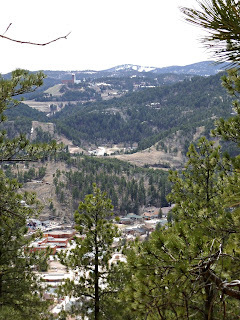
For my feet on the ground research, I traveled to Deadwood (not a long trip for me – the town is about an hour away from where we live) and took advantage of the historical walking tour. Definitely worth my time! I also spent an hour (or two, or three) in a museum dedicated to the town’s early history – the same years of my story setting. Seeing some of the clothing, furniture, pens, and other things used at that time (including the hypodermic needles the prostitutes used for their drugs) from that era helped me add authentic details to my story.
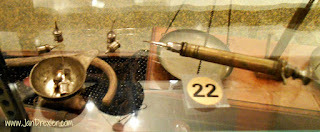
I also spent time walking through the cemetery and reading inscriptions on the grave markers. So many of the early graves were for Civil War veterans who came to Deadwood ten years after the war ended to find their fortunes – a detail that became part of my hero’s backstory.
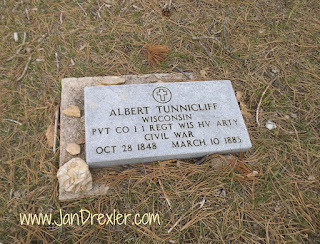 Many of the old stones have been restored by the Deadwood Historical Society
Many of the old stones have been restored by the Deadwood Historical SocietyI also read books. I read an autobiography of a woman who had been a young girl in Deadwood at the time of my story (her father had been the territorial judge.) I met people like Calamity Jane and Seth Bullock through her eyes. I also read first-hand accounts of figures who were part of the gold rush history of Deadwood. Source materials like these are invaluable when you’re trying to cement the setting (time and space) in your imagination.
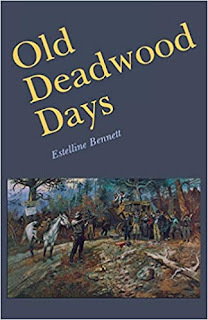
I also found photographs of the town from those early years, crude maps of mining claims (including a few in the middle of Main Street,) and descriptions of life in a mining camp.
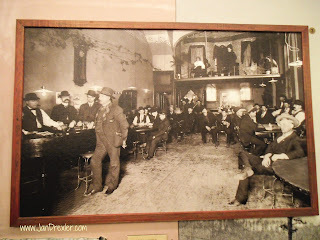
All of this research was to give my readers an authentic representation of the setting.
What if I'm writing a contemporary novel?
Many of the same research techniques apply, except that the source materials will be current rather than historical! Again, feet on the ground research is the best.
But if you can’t travel to your location, the internet is your friend. Most towns have a website or Facebook page. For information about the inner workings and issues facing small towns in the Black Hills (for my WIP, a cozy mystery in a contemporary setting,) I subscribed to a local small town paper.
How do I start?
- When I’m exploring a new-to-me setting, I go to Google Maps first. That helps me set the location in its geography and proximity to other towns. This helps for imaginary towns, too. If my setting is in rural northern Indiana, I focus on the area (terrain, roads, highways, etc.) and start building my imaginary location from that.
- If I’m writing an historical, my next step is to look for the location in a map from the same time period as my story (or as close as I can get.) My favorite source for this is Historic Mapworks.
- Then I start delving deep into the plethora of research materials available through the library or online. Our own Erica Vetsch finds some of the greatest books and sources for researching the Regency Era and the Napoleonic Wars. I love perusing local used bookstores and tourist areas for Black Hills history (the tourist mecca, Wall Drug, has a fabulous bookstore!)
- I never discount using fiction for my research – if the other author has done his or her research well, I can glean a lot from their knowledge as I read their book.
- I talk to people. When I go to a museum, I try to strike up a conversation with a docent. They are usually volunteering their time as docents because they LOVE their subject and are very knowledgeable. A word of warning, though – although most docents are this way, I have run into a few who know nothing about their subject. Some people volunteer for other reasons. So I try to have a working knowledge of my subject before I have that conversation.
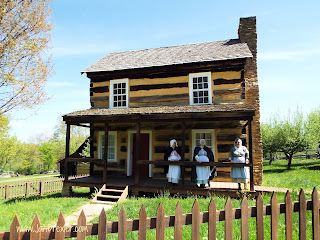 Some friendly (and knowledgeable) docents at the Somerset Historical Center in Somerset County, PA
Some friendly (and knowledgeable) docents at the Somerset Historical Center in Somerset County, PA Are you ready to talk about the setting of your novel? How did you choose it? How did you do your research?
Let’s talk!
And just for fun, the Deadwood story I mentioned in this post is being re-released in a two-for-one from Love Inspired in January! One commenter will win a copy - sent after its publication, of course. Meanwhile, you can preorder HERE.
About the stories:
 A ready-made family
A ready-made familyThe Texan's Inherited Family by Noelle Marchand
Busy Texas farmer Quinn Tucker is used to raising crops, not children. So when four nieces and nephews are left in his care, it's not long before he realizes they need a mother. But his search for a wife leads to the least likely woman for illiterate Quinn—schoolmarm Helen McKenna. Could a marriage in name only blossom into something more?
A Home for His Family by Jan Drexler
Nate Colby came to the Dakota Territory to start over, not to look for a wife. He'll raise his orphaned nieces and nephew without schoolteacher Sarah MacFarland's help. Sarah deserves better than a man who only brings trouble to those around him. Yet helping this ready-made family set up their ranch only makes Sarah long to be a part of it—whatever the risk.



